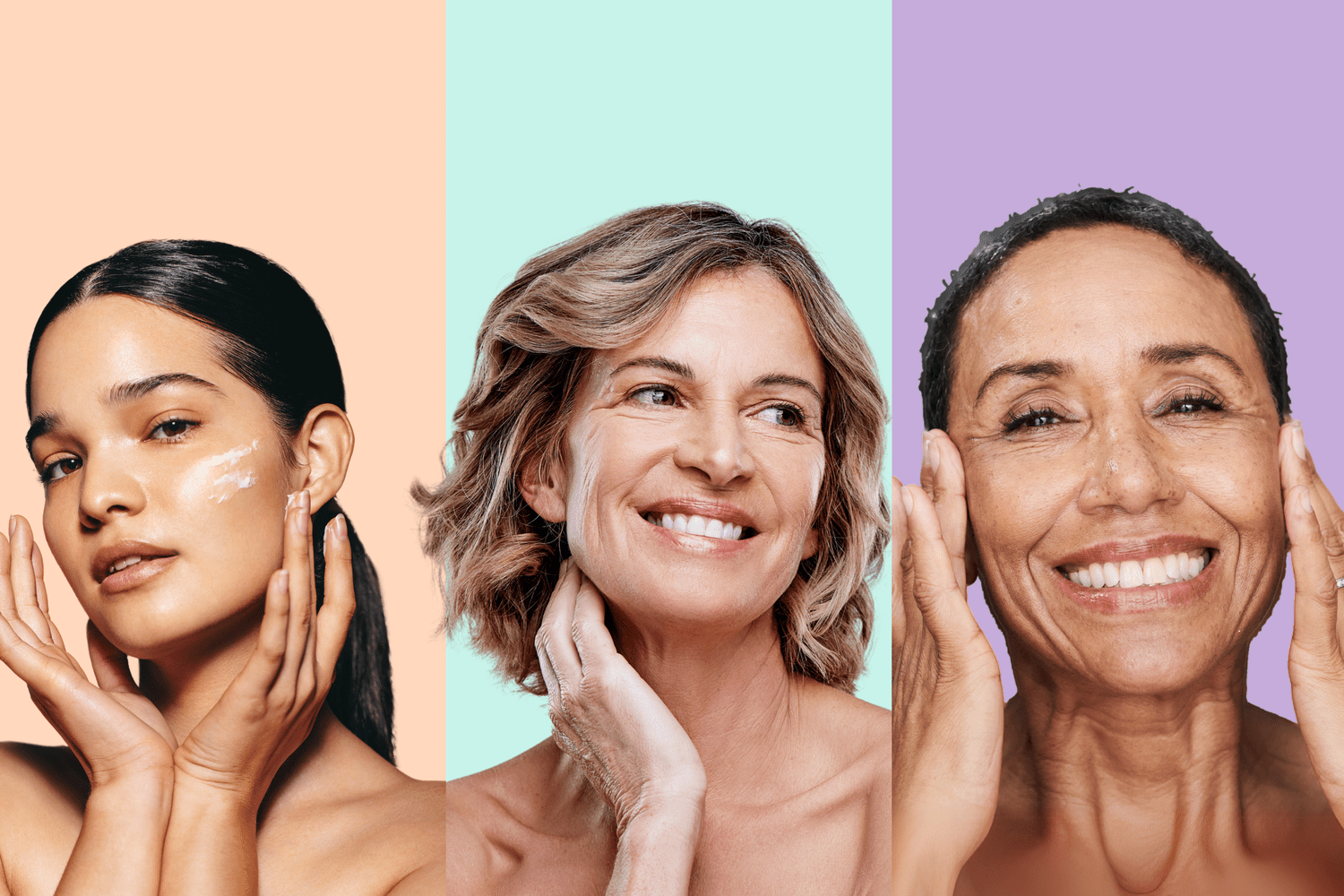Investing in Your Skin: A Guide for Every Age

We independently evaluate all of our recommendations. If you click on links we provide, we may receive compensation.
Jennifer Garner has famously said, “Nothing looks as good in your 50s as sunscreen in your 20s.” But in 2024, we’re way past the wear sunscreen for good skin advice. This year, there were over 19 million non-surgical cosmetic procedures, like injectables and lasers, performed around the globe, according to the International Society of Aesthetic Plastic Surgery. That’s about a 40 percent increase since 2020. “The biggest trend in beauty right now is high-maintenance to be low-maintenance,” beauty industry veteran of over 25 years, Michelle Lee, tells Shape. Lee, who helped pioneer the cultural lexicon of aging, banning the use of the term “anti-aging” in publications like Allure, where she was the editor-in-chief for six years, explains, “Today, people want to look natural; there’s a bit of a backlash of things looking overly airbrushed. We don’t want the overblown lips of the perfect face.”
Instead, Lee points to trends like regular tweakments, brow lamentations, lash lifts, gel nails, and lip blushing, aesthetics procedures that give you a good daily canvas. “We’re even seeing more skin tints and light coverage foundations. People want to show their actual skin.” It is a turn towards authenticity with a “tweak.” Which brings us to the topic of skin health in this brave new world of beauty—and the importance of skinvesting.
We all know to wear a daily SPF, drink water, and have a skincare routine. “But today’s generation has access to so much more information than prior generations,” says Rishi Chopra MD, MS, FAAD, a Harvard fellowship-trained cosmetic dermatologist. “There’s a complicated relationship between beauty and skin health. Today’s procedures are cosmetic, but they’re also improving our skin health,” noting that the beauty of injectables is that they “can delay skin aging.”
What’s notable here is Chopra isn’t just talking about the appearance of skin; he’s talking about actual skin health. “Prior interventions were all repair-based,” he says. “Today, neuromodulators prevent tension on the skin, prevent fine lines and wrinkles from occurring, and can improve skin quality by controlling excess oil glands.” The emerging science behind collagen banking has put a bigger highlight on proactive treatments. We know that as we age, collagen in the skin depletes, and its quality (think: thickness, plumpness, elasticity) depletes. But when we bank collagen with early interventions, we can delay that decline. “You can change your genetic trajectory,” he says.
“Regenerative medicine, where we’re harnessing our own body to produce collagen and the things in young skin will help us look and age better,” Jennifer Levine, MD, one of New York’s top facial plastic surgeons, who’s performed approximately 100 facelifts in 2024, tells Shape.
The TL;DR is that if people introduce neuromodulators and other tweakments to improve skin quality in their 20s, their skin will be in better shape by the time they’re 50. What that means is relative to the individual, of course, but “we don’t have to wait until we age to repair,” notes Chopra.
Better skin quality also puts patients in a better place to benefit from further interventions if they’re needed. “Potentially, you’ll never need a facelift or a carbon dioxide (CO2) laser,” says Chopra. But if you do, both he and Levine confirm, the higher the skin quality, meaning the more laxity it has from collagen banking, the easier the healing process, and the more successful the outcome.
We’re not advocating that 20-year-olds get unnecessary treatments. “I say no to people in their 20s all the time if it’s unnecessary,” Levine tells Shape.”The treatment has to be anatomically correct. My office is not Burger King; it’s not have it your way.” However, Levine does practice regenerative medicine, with Ultherapy and Ultherapy PRIME to address deeper layers of the skin, biostimulatory fillers, exosomes, and salmon sperm to address skin volume and laxity as needed.
“When you start lasers younger,” explains Chopra, “you bank collagen, so it’s a gradual decline as you age. With neuromodulators, the muscle has a lot of resistance to wrinkling. Prevention is the pre-juvenation method.” Then, as you age, you increase the doses and frequency of these so-called smaller interventions.
To avoid haphazard injecting, or what Levine calls the “Burger King model,” with patients hopping from treatment to treatment without a formalized plan, a new type of membership model has emerged on the skin health and beauty scene. This month marks the launch of Club Evolus, which puts patients on a customized neuromodulator plan (the neurotoxin brand they use is Jeuveau) that connects patients and practitioners with an automated feature. Unlike memberships like Allē (a loyalty program developed by Botox), Club Evolus, is geared towards Millennials, and is interested in automating their skinvestments. Like any membership model, shaving money off the cost of each treatment helps customers save as they skinvest, too.
“The membership model is nothing new,” says Lee. “Magazine subscriptions have been around forever. You either pay a lump sum, and your magazine comes in the mail, or you pay a higher price per issue without a subscription.” She notes, however, that what is new is our cultural landscape, and that’s evolved the notion of membership and how it caters to the current consumer need. “Two things converged — technology and people today are busy — so consumer desire has enabled a new membership model. One of its main benefits,” she says, “is removing a mental load.”
Of course, there are drawbacks to removing what Lee calls the “mental load” of having to pull the trigger each time you want to bank some collagen for the future. Like with any subscription model, you might end up with something you don’t need, or maybe your needs (or finances) change. Undoubtedly, the practitioner also plays an incredibly important role. “Someone who hasn’t smoked and has used sunblock topical skincare routinely will be better off than someone who hasn’t,” says Levine. “Someone who used lasers and other things to rejuvenate the skin will be better off, too. But the tools are only as good as the person using them.”
If you choose to skinvest, today’s membership models are more bespoke than ever, and advocate transparency in the transfer of information from practitioners to patients. The idea of connecting with a practitioner who can chart your skin health as the decades pass is appealing, as is of course the prospect of a glowing portfolio.
If you’re not quite ready to get on the bandwagon for injectable memberships, you can boost your skin health right at home. If that’s your goal, here are our eight top product recommendations for keeping your skin oh-so-glowy.




